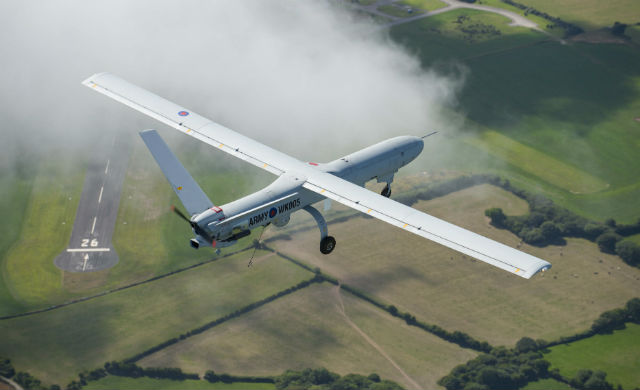The recent flight of a Thales Watchkeeper in controlled airspace in Wales was simply “a one-off”, and a lot more work must be done before unmanned systems of its size can routinely fly through national airspace, the UK Civil Aviation Authority (CAA) says.
The unmanned air vehicle (UAV) flew under the jurisdiction of air traffic control for the first time on 30 September for 1h of a sortie in Wales. The flight took place under the Civil Airspace Integration of remotely piloted aircraft system in Europe effort, which is part-funded by the Single European Sky ATM Research joint undertaking.
However, Gerry Corbett, the CAA’s programme lead for UAVs, told the Commercial UAV Show in London on 20 October that it was only a demonstration, and a lot of planning and funding was required in order for the British Army aircraft to be permitted to carry out the sortie.
“It doesn’t mean that Watchkeeper is now routinely flying through controlled airspace,” Corbett says. “This was after all a military aircraft with ‘army’ written down the side.”
Watchkeeper is certified to fly in controlled airspace, but Corbett noted that its single engine would prevent this being a routine operation for safety reasons: “As soon as that engine fails, it would drop out of the airspace.”
However, Corbett suggested that the way the testing was carried out should be replicated by others looking to fly their systems in controlled airspace.
“We ended up putting lots of temporary danger zones underneath the flight path,” he said. This was a practice that has been available for five years, but has not been utilised effectively.

Thales
Corbett says he expected that larger General Atomics Aeronautical Systems MQ-9 Reaper and Northrop Grumman RQ-4 Global Hawk-sized systems would have been introduced for testing in national airspace by now, but this does not seem to be the case.
The latter UAV has previously been flown through high-altitude UK airspace as part of a NATO exercise, but this was in a relatively safe area of airspace and was therefore somewhat mundane, Corbett noted. “Yes, we’ve done this, but let’s go and do it some more,” he said.
Regarding the Watchkeeper test, Corbett adds that another flight was planned, but that bad weather stopped it from happening.
“The testing was a start, and we’ll see where we go from there,” he added.
Source: FlightGlobal.com



















